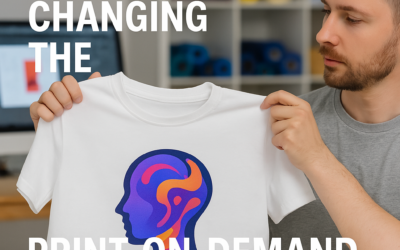3D Printing for Customized Products: The Future of Consumer Electronics
3D printing is revolutionizing the consumer electronics industry by enabling personalized products that perfectly match individual needs and styles. As more people seek tailored solutions, this innovative technology is transforming the way products are designed, produced, and enjoyed. In this article, we explore how 3D printing is reshaping consumer electronics, its benefits, real-world applications, challenges, and what the future holds for small businesses and tech enthusiasts.
The Rise of 3D Printing in Consumer Electronics
Often referred to as additive manufacturing, 3D printing creates three-dimensional objects by building layers from digital files. Its ability to produce intricate designs with minimal waste has led to rapid market growth. A recent MarketsandMarkets report forecasts that the global 3D printing market will reach $34.8 billion by 2026, with a compound annual growth rate (CAGR) of 23% between 2021 and 2026. This surge in 3D printing adoption is particularly impactful in the consumer electronics sector.
Key Benefits of 3D Printing for Customized Products
3D printing offers several advantages for creating personalized electronics, making it an ideal solution for small businesses and individual consumers:
- Personalization: Create products that fit personal style and usage needs—from unique phone cases to custom-fit headphones.
- Cost-Effectiveness: Save on production costs by reducing wastage and bypassing expensive large-scale manufacturing setups.
- Rapid Prototyping: Quickly develop and iterate prototypes to refine designs based on valuable user feedback.
- On-Demand Production: Print products only when needed, which cuts down on inventory expenses and storage space requirements.
Real-World Applications in Consumer Electronics
Many companies are already leveraging 3D printing to offer customized electronics that enhance user experience. Consider these innovative examples:
- Custom Earbuds: Audio brands are using 3D printing to create earbuds that conform to the unique shape of an individual’s ear for better comfort and superior sound quality. Learn more.
- Personalized Smartphone Cases: Companies like Casetify empower users to design their own phone cases by choosing colors, patterns, and even incorporating personal images.
- Wearable Technology: Brands are exploring 3D printed custom-fit bands that cater to individual wrist sizes and preferences, enhancing comfort and style.
Challenges and Considerations
While the benefits of 3D printing are clear, there are challenges that both businesses and consumers should be aware of:
- Material Limitations: Currently, the range of materials available for 3D printing is not as extensive as those in traditional manufacturing.
- Quality Control: Maintaining consistent quality in complex designs can be difficult, calling for rigorous quality assurance measures.
- Intellectual Property Concerns: The ease of replicating designs raises potential issues related to copyright and patent infringement.
The Future of 3D Printing in Consumer Electronics
Looking ahead, the future of 3D printing in consumer electronics is very exciting. As the technology evolves, expect to see:
- Advanced Materials: New materials that offer enhanced durability and functionality, opening up even more product possibilities.
- Integration with IoT: Customized IoT devices that are printed on demand and tailored to specific user needs.
- Wider Accessibility: More affordable 3D printers, making it easier for small businesses and hobbyists to produce their own customized products.
Conclusion
3D printing is paving the way for a new era in consumer electronics by offering endless possibilities for customization and rapid innovation. With benefits like personalization, cost efficiency, and swift prototyping, this technology is set to become an essential tool for small business owners and tech enthusiasts alike. As advancements continue, embracing 3D printing can lead to unique opportunities and thriving in an increasingly personalized market.



